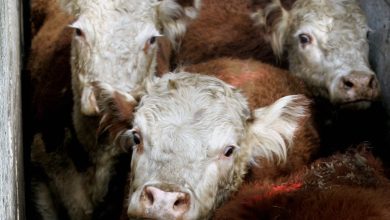Raising Cows for Meat A Comprehensive Guide to Success


Cows have long been an invaluable source of meat, providing sustenance and nourishment to countless individuals. If you’re considering embarking on the rewarding journey of raising cows for meat, this comprehensive guide is here to assist you every step of the way. From understanding the intricacies of raising cattle to exploring various techniques and best practices, we’ll cover everything you need to know to ensure a successful venture into the world of meat production. So let’s dive in and discover how to raise a cow for meat like a seasoned professional.
Section 1: Understanding the Basics
What Are the Different Breeds of Cattle for Meat Production?
When it comes to raising cows for meat, choosing the right breed is crucial. Several breeds are renowned for their exceptional meat quality and productivity. The following are some popular options:
- Angus: Angus cattle are highly prized for their marbling and tenderness, making them a preferred choice for beef production.
- Hereford: Hereford cattle are known for their adaptability and excellent foraging abilities, resulting in high-quality meat with rich flavor.
- Charolais: Charolais cattle are large in size and boast fast growth rates, producing lean and flavorful meat.
Understanding the characteristics of each breed will help you make an informed decision based on your specific goals and requirements.
When Is the Ideal Time to Start Raising Cows for Meat?
Timing plays a vital role when it comes to raising cows for meat. Ideally, the spring season is considered the most suitable time to start your venture. This allows the calves to be born during favorable weather conditions, ensuring their healthy growth from the very beginning. By starting in the spring, you provide ample time for the calves to mature and reach the desired weight for processing.
Section 2: Getting Started
How to Select Healthy Calves?
Choosing healthy calves is crucial for a successful meat production endeavor. When selecting, look for the following indicators of good health:
- Active and alert behavior: Healthy calves exhibit curiosity, playfulness, and alertness.
- Smooth coat and bright eyes: A shiny coat and clear, bright eyes are signs of good overall health.
- Strong build and sturdy legs: Calves with well-developed muscles and sturdy legs are more likely to grow into robust adults.
It’s also advisable to consult with experienced farmers or veterinarians who can guide you in identifying the best calves for meat production.
Pros and Cons of Raising Cows for Meat
Before diving headfirst into any endeavor, it’s essential to weigh the advantages and disadvantages. Let’s explore the pros and cons of raising cows for meat:
Pros:
- Self-sufficiency: Raising your own cows provides a sustainable source of high-quality meat for you and your family.
- Profit potential: Selling surplus meat can generate income for your farm.
- Control over the process: You have full control over the feed, environment, and healthcare of the animals, ensuring their well-being and the quality of the meat.
Cons:
- Initial investment: Setting up infrastructure and purchasing cattle can require a significant upfront investment.
- Time commitment: Raising cows for meat demands consistent dedication and time management.
- Challenges of scaling: Expanding your operation can be complex and requires careful planning.
Understanding these pros and cons will help you make an informed decision and prepare for the challenges ahead.
Section 3: Essential Steps in Raising Cows for Meat
Step-by-Step Guide to Raising Cows for Meat
Now that we’ve covered the basics, let’s delve into the step-by-step process of raising cows for meat:
Step 1: Prepare the Infrastructure
Before bringing in the cattle, ensure you have a well-designed infrastructure in place. This includes secure fencing, shelter for protection against extreme weather conditions, and clean water sources.
Step 2: Select the Right Feed
Provide a balanced diet that meets the nutritional requirements of your cows. This typically includes a combination of high-quality forage, such as grass or hay, supplemented with grains or concentrate feed to promote healthy growth.
Step 3: Ensure Proper Healthcare
Regularly consult with a veterinarian to implement a comprehensive healthcare plan for your cows. This includes vaccinations, parasite control, and routine check-ups to identify and address any health issues promptly.
Step 4: Monitor Growth and Development
Keep a close eye on the growth and development of your cows. Regularly weigh them to track their progress and adjust their diet accordingly. Maintaining optimal growth rates is essential to achieve the desired weight for processing.
Step 5: Harvesting and Processing
When the cows reach the desired weight, it’s time to consider harvesting and processing. You can either opt for on-farm processing or work with a local abattoir for the processing. Ensure that the processing facility meets all the necessary regulations and standards to guarantee food safety and quality.
Section 4: Exploring Alternatives
Alternative Methods of Raising Cows for Meat
While traditional methods of raising cows for meat involve owning and managing your own herd, there are alternative approaches worth considering:
- Custom Grazing: Collaborate with farmers who specialize in grazing management. This allows you to utilize their pasture resources while focusing on the meat production aspect.
- Cooperative Farming: Join forces with other farmers to collectively raise a larger number of cows. This enables cost-sharing and resource pooling for a more efficient operation.
- Direct Sales: Skip the middleman by selling directly to consumers through farmers markets, online platforms, or community-supported agriculture (CSA) programs.
Exploring these alternatives can provide flexibility and potentially reduce the initial investment required while still allowing you to participate in the meat production process.
Section 5: Tips for Success
Essential Tips for Successful Cow Meat Production
To ensure a successful venture into raising cows for meat, consider the following tips:
- Invest in Infrastructure: Build sturdy fences, provide comfortable shelter, and establish reliable water sources to create a conducive environment for your cows.
- Focus on Nutrition: Develop a well-balanced diet plan that meets the nutritional needs of your cows at each stage of their growth.
- Regular Veterinary Care: Schedule routine check-ups and vaccinations to maintain the health and well-being of your cows.
- Keep Detailed Records: Maintain accurate records of feed consumption, weight gain, healthcare interventions, and other relevant data to track progress and make informed decisions.
- Continuous Learning: Stay updated with the latest research, best practices, and industry trends related to meat production to optimize your processes and stay ahead.
Implementing these tips will enhance your chances of success and ensure the production of high-quality meat.
Section 6: Comparing Different Approaches
Pasture-Raised vs. Feedlot-Raised Cows: A Comparison
When raising cows for meat, there are two primary approaches: pasture-raised and feedlot-raised. Let’s compare these methods:
Pasture-Raised Cows:
- Pros:
- Higher quality of life for the cows due to natural grazing and access to open spaces.
- Potential for more nutrient-rich meat due to a varied diet from grazing on diverse vegetation.
- Environmentally friendly approach with reduced reliance on concentrated feed.
- Cons:
- Longer time to reach processing weight due to slower growth rates.
- Greater land requirement for grazing areas.
Feedlot-Raised Cows:
- Pros:
- Faster weight gain and shorter time to reach processing weight.
- More controlled environment allows for precise feeding and monitoring.
- Requires less land compared to pasture-based systems.
- Cons:
- Limited mobility and reduced access to open spaces for the cows.
- Reliance on concentrated feed may result in lower nutrient diversity in the meat.
- Environmental concerns related to waste management from concentrated animal feeding operations (CAFOs).
Consider your priorities, available resources, and desired outcomes when choosing between these two approaches to find the one that aligns best with your goals.
Section 7: Choosing the Best Approach
The Best Approach for Raising Cows for Meat
Determining the best approach for raising cows for meat depends on various factors, including your resources, goals, and personal preferences. However, a comprehensive and sustainable method that combines the best aspects of both pasture-raised and feedlot-raised systems can yield excellent results.
By allowing cows ample access to pasture for grazing while also incorporating controlled feeding and monitoring practices, you can ensure optimal growth, high-quality meat, and animal welfare. This approach strikes a balance between natural foraging behavior and the efficiency of feedlot systems, resulting in a harmonious and productive environment.
Conclusion
Raising cows for meat is a rewarding endeavor that requires careful planning, diligent management, and a passion for sustainable agriculture. By understanding the basics, selecting the right breeds, following essential steps, and implementing best practices, you can embark on a successful journey towards producing high-quality meat. Remember to prioritize the well-being of your cows, stay informed about industry advancements, and adapt your strategies as needed. With dedication and knowledge, you can become a skilled and responsible producer in the world of cow meat production.
FAQs (Frequently Asked Questions)
1. How long does it take to raise a cow for meat?
Raising a cow for meat typically takes around 18-24 months, depending on factors such as breed, feeding regimen, and desired processing weight.
2. What is the average weight of a cow at processing?
The average weight of a cow at processing is approximately 1,000 to 1,400 pounds (450 to 635 kilograms), although thiscan vary depending on the breed and the specific requirements of the market.
3. Is it cost-effective to raise cows for meat?
Raising cows for meat can be a cost-effective venture, especially if you have access to land for grazing and can efficiently manage feed costs. However, it’s important to consider factors like initial investment, veterinary care, and infrastructure maintenance when evaluating the overall profitability.
4. What are some common health issues in cows raised for meat?
Cows raised for meat may encounter various health issues, including respiratory infections, parasites, metabolic disorders, and reproductive problems. Regular veterinary care, proper nutrition, and a clean and stress-free environment can help prevent and manage these health challenges.
5. Can I raise cows for meat on a small-scale farm?
Yes, it is possible to raise cows for meat on a small-scale farm. However, keep in mind that the number of cows you can raise will depend on the available land, resources, and your capacity to manage the animals effectively. Starting with a smaller herd size and gradually expanding as you gain experience is a prudent approach.
6. How do I find a reliable processing facility for my cows?
To find a reliable processing facility for your cows, consider local recommendations from other farmers or agricultural organizations. Visit potential facilities, inquire about their certifications, hygiene standards, and track record. It’s essential to choose a facility that prioritizes animal welfare and maintains high-quality standards throughout the processing process.



